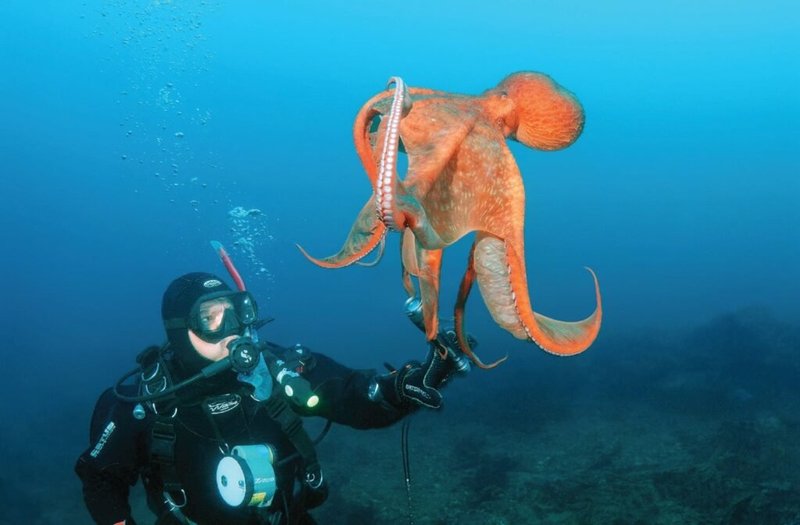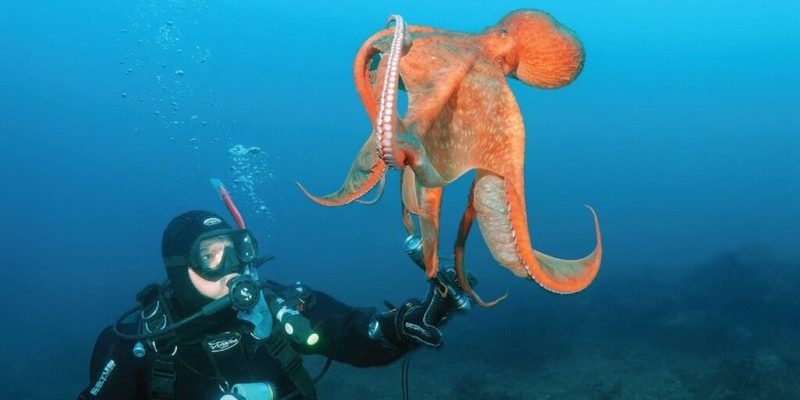
Imagine you’re sitting at a café, sipping your favorite drink, and you hear about marine biologists who study octopuses. You might wonder how they get up close to these fascinating beings without getting hurt—or causing harm to the octopus itself. Here’s the deal: understanding the nature of octopuses, their behaviors, and how to respect their space can make all the difference in having a safe interaction.
Understanding the Octopus
Octopuses are truly remarkable creatures, known for their incredible intelligence and problem-solving skills. They belong to the cephalopod family, which includes squids and cuttlefish. Did you know they have three hearts? Two pump blood to the gills, while the third pumps it to the rest of the body. This unique physiology gives them the ability to thrive in various underwater environments.
Their body is soft and flexible, allowing them to squeeze through tight spaces. They can also change color and texture, blending in like a chameleon. This camouflage serves a purpose, whether it’s for hunting or avoiding predators. You might be surprised to learn that octopuses can even squirt ink as a defense mechanism, creating a smokescreen to escape from potential threats. All these traits make them fascinating, but they also remind us to approach them with caution and respect.
Friendly Encounters: Pools and Aquariums
One of the safest ways to interact with an octopus is through organized encounters at marine parks or aquariums. These controlled environments allow you to observe octopuses up close without putting yourself or the animal at risk. Facilities often have trained staff who prioritize both human safety and the well-being of the octopuses.
During these interactions, you might have the chance to touch an octopus under supervision. Staff can guide you on how to approach gently, ensuring the octopus feels comfortable. Remember, octopuses are sensitive creatures, and sudden movements might startle them. A slow and calm approach goes a long way in making the experience enjoyable for everyone involved.
Natural Habitats: Dive with Caution
If you’re a fan of snorkeling or scuba diving, you might dream of encountering an octopus in its natural habitat. While this can be a thrilling experience, it’s crucial to respect their environment. Here’s the thing: these creatures are not meant for human interaction, so it’s essential to observe them from a safe distance.
When you spot an octopus underwater, give it space. Avoid touching or chasing them, as this can stress them out. Instead, let them be themselves while you marvel at their beauty. Utilizing a camera to capture the moment can be a great way to remember your experience without intruding on their world.
Recognizing When to Keep Your Distance
While most octopuses are not aggressive, certain species are more defensive than others. For example, the blue-ringed octopus, although small and beautiful, carries venom potent enough to harm humans. Understanding which species are safe to interact with is crucial for your safety. Doing a little research beforehand can help you identify which octopuses are friendly and which ones require a cautionary approach.
Here are a few general tips for knowing when to keep your distance:
- If an octopus appears defensive, like displaying colors or posturing, step back.
- Watch for ink release; this could mean it feels threatened and is trying to escape.
- Respect their environment and avoid touching anything around them, as they may perceive it as a threat.
Gear and Equipment: What You Need
If you’re considering an underwater adventure, having the right equipment can enhance your experience with octopuses. A good mask and snorkel or scuba gear are essential for clear visibility. Make sure you have fins for streamlined movement through the water, allowing you to navigate effortlessly.
Additionally, consider bringing along an underwater camera. Not only will this help you document your encounters, but it also minimizes the temptation to touch or disturb the octopus. Remember, the goal is to observe, not intrude. If you’re diving with a guide, they’ll often have the necessary tools and knowledge to keep you and the octopus safe.
Marine Conservation: Why It Matters
Interacting with octopuses isn’t just about a thrilling encounter; it’s also about understanding their role in our ecosystems. Octopuses contribute to the marine food web and help maintain ecological balance. By observing them responsibly, we can foster a greater appreciation for their habitat and promote conservation efforts.
Take the time to learn more about octopus habitats and the threats they face, such as pollution and climate change. Supporting marine conservation organizations can go a long way in ensuring that future generations also have the opportunity to interact with these amazing creatures.
In summary, humans can indeed interact safely with octopuses, but it requires knowledge, respect, and responsibility. Whether you’re observing them in an aquarium or marveling at them in the wild, understanding their nature is key. As we explore the world of octopuses, let’s remember the importance of protecting their habitats and respecting their boundaries.
So, next time you think about getting close to an octopus, remember the lessons learned. Approach with care, appreciate from a distance, and cherish the moments you get to witness these incredible animals in action. After all, interacting with octopuses should be a shared experience—one that celebrates both their beauty and our commitment to keeping them safe.

